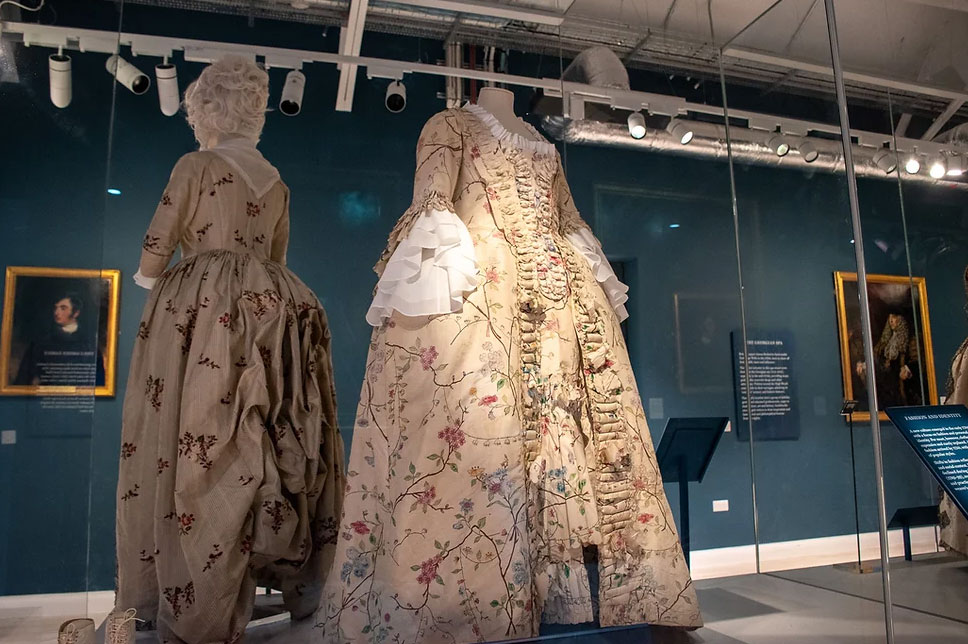
A robe a la Française, dating to 1760 – 1780, formed from silk decorated with a delicate hand-painted floral design, was recently placed on display at The Amelia, Tunbridge Wells Museum. This rare addition to the Georgian costumes was made possible following extensive conservation.
Comprising an outer robe, stomacher and under-skirt, the overall condition of the costume was assessed as fragile, due to the to the state of deterioration in the silk.
Previous repairs to the under-skirt centered on alterations to the waistband: it was gathered into four panels that tied together at the corners and as a result, it was too wide to fit an average waist.
At the front, the under-skirt features tiers of decorative pleating; during examination it was discovered that a large panel of the silk had been removed from under the top tier.
The silk of the stomacher was assessed as being too weak to enable it to be displayed – this elongated triangle of silk is attached across the chest, beneath the robe.

To resolve the problem of missing fabric and the condition of the stomacher, a section of the hand-painted fabric was reproduced onto new silk using a digital imaging process. With scale and colour match achieved, the printed silk was used to create a patch that precisely fitted the missing section within the under-skirt.
An exact replica of the stomacher was created from the copied fabric, with the method of attachment to the display form researched, to ensure that it was also authentic.
Examination of the silk along the top of the under-skirt revealed traces of original fold-lines, that indicated the correct location where broad pleats had been created. In following this format, the waistband was returned to its former design which provided shaping over the wide hip area. Research into the construction of late 18th Century under-skirts, provided the format for shaping over the hips, that resolved the issue of excess silk.


The robe was embellished with false cuffs, constructed from fine organdie fabric and featured two graduated tiers. Around the square shaped neckline, a white cotton frill was pinned into the display form to suggest the neckline of a chemise or shift, that originally may well have been made from linen.
The Robe a la Française was fitted to the display form at the museum. It completes the set of early female costumes on exhibition in The Georgian Spa gallery.

Main photograph credit: The Amelia, Tunbridge Wells Museum